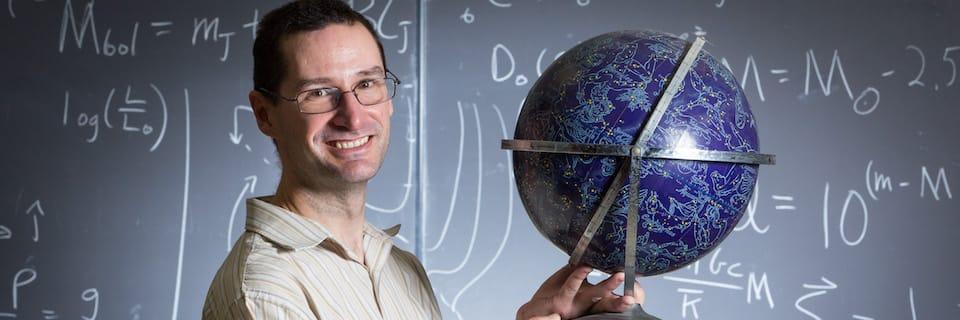Physics Faculty Member Assists with Exciting Discovery of New Planetary System

It’s a section of the sky that Mark Pecaut, Ph.D., associate professor of physics, is well familiar with.
Since his days as a doctoral student at the University of Rochester, Pecaut has been studying a particular group of stars in the night sky. And even after several publications, conference presentations, and undergraduate research projects led using the same group of stars, it turns out there’s still plenty to learn.
Pecaut is one of a number of co-authors on a new paper detailing an exciting discovery that builds on the work builds on the work he and others have done over the years on this group of stars. The team, led by Leiden University Ph.D. student Alexander Bohn, announced Wednesday that using the European Southern Observatory’s Very Large Telescope they have directly observed a multiplanet system orbiting a star very similar in mass — but considerably younger — than our own sun, located in the group of stars Pecaut said he has spent so much of his professional career studying. A paper, appearing the same day in The Astrophysical Journal Letters, detailed the discovery.
“It’s exciting to be a part of, no doubt,” he said.
The method of discovery — direct imaging — puts this particular system, known as TYC 8998-760-1, in a uniquely small category of known systems.
“Other planets have been discovered this way in the past,” Pecaut said. “It’s not super common, but it happens. This is noteworthy because it’s a multiplanet system. There’s basically only two of these systems that have been discovered this way already. This will be the third.”
Direct imaging means the planets were detected by measuring light coming directly from them, instead of being detected indirectly by measuring fluctuations in background light. Direct imaging is a technique that is used mostly to detect younger stars, Pecaut said, and those in relatively close proximity. It also means researchers will likely be able to gather much more information about the planet — which could include insights into how the planets were formed in the first place.
TYC 8998-760-1 is also relatively close to our solar system, by astronomical standards — 300 light years. And because of the star’s similarity to our own sun but at a relatively young age, Pecaut said this discovery could potentially lead to insights into our own solar system.
“In a way, we’re kind of looking at something similar to what we would have gone through billions of years ago,” he said.







